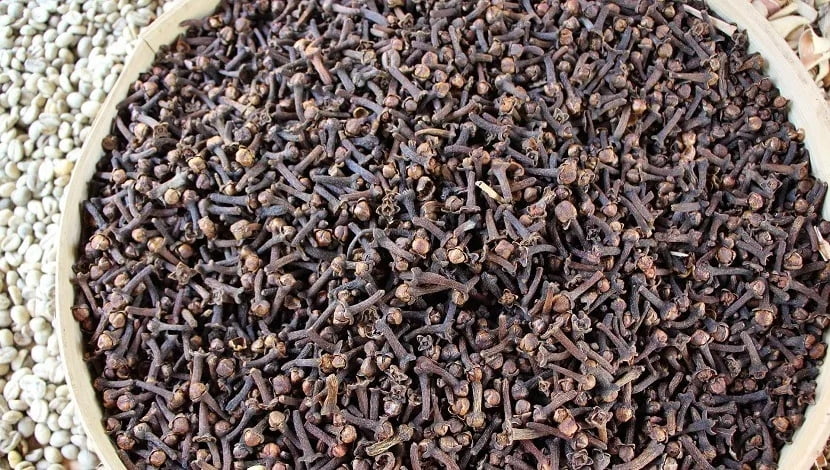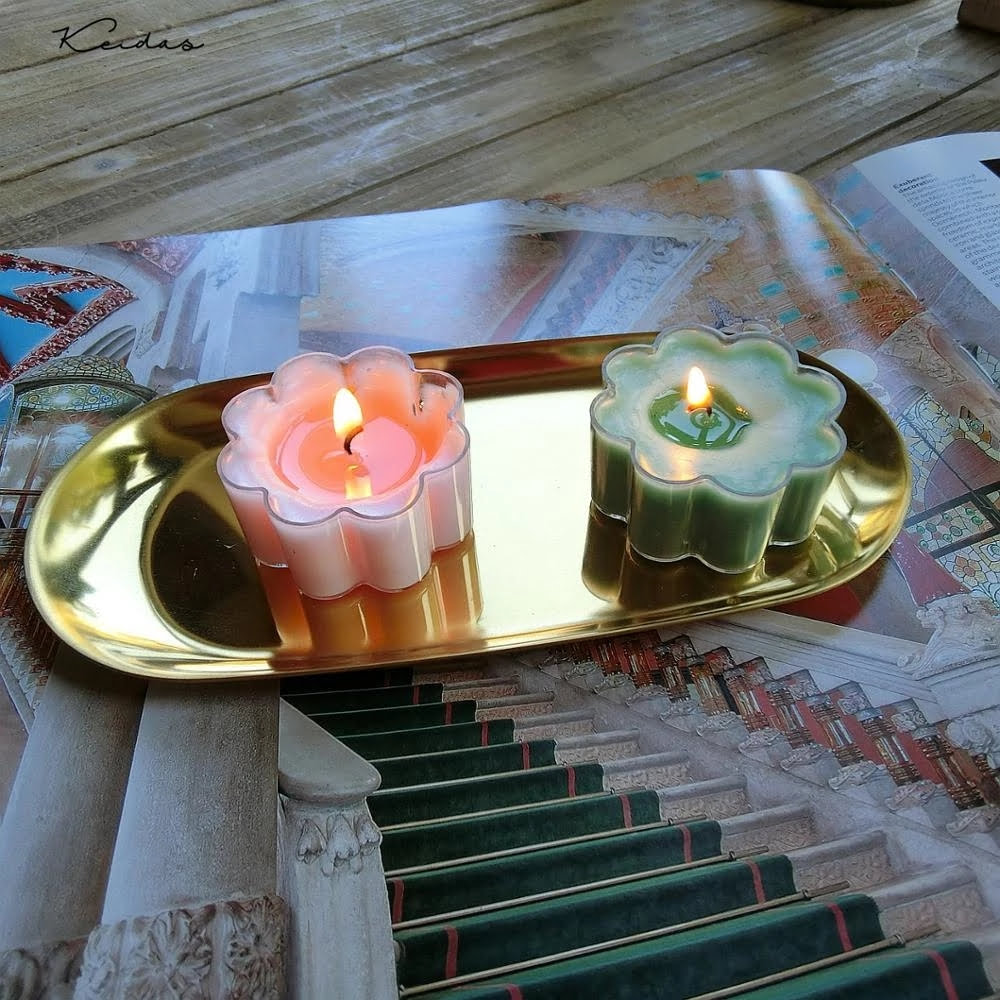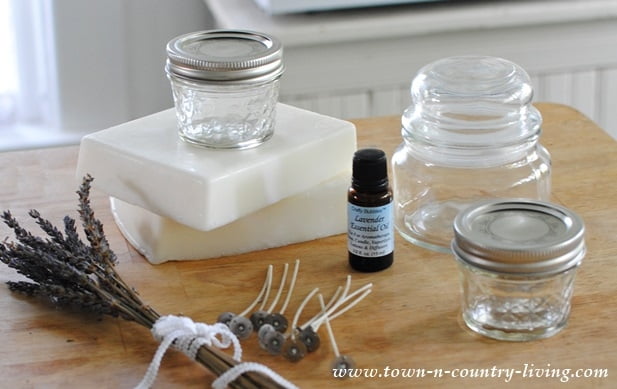Are you looking for a good wax for candle making? Whether you’re a seasoned candle maker or just starting out, the type of wax you choose can have a significant impact on the quality and performance of your candles.
In this article, we will explore the world of candle making and delve into the different types of wax available. We’ll also discuss the key characteristics to look for in a good wax and provide tips for successful candle making.
Candle making is an ancient art that has evolved over time, with various materials being used to create beautiful and fragrant candles. From traditional paraffin wax to natural options like soy wax and beeswax, there are plenty of choices available for today’s candle enthusiasts. Understanding the different properties of each type of wax can help you make informed decisions about which one is best suited for your specific needs.
When it comes to choosing the right wax for your candle making project, there are several important factors to consider. The melting point, fragrance retention, burn time, and overall aesthetic appeal are just some of the characteristics that can vary between different waxes. In the following sections, we will explore these features in more detail and provide insights into how they can impact your candle making endeavors.
Different Types of Wax for Candle Making
When it comes to candle making, choosing the right wax is essential for creating high-quality candles. There are several different types of wax available for candle making, each with its own unique characteristics and benefits. Understanding the differences between these waxes can help you make an informed decision when selecting the best option for your candle making project.
Paraffin Wax
One of the most commonly used waxes for candle making is paraffin wax. This type of wax is known for its affordability and ease of use, making it a popular choice for both beginners and experienced candle makers.
Paraffin wax also has a high fragrance load, which means it can hold a large amount of scent, resulting in strong-smelling candles. However, paraffin wax is a by-product of petroleum and may not be the best option for those looking for a more natural or environmentally friendly wax.
Soy Wax
Soy wax has gained popularity in recent years due to its renewable and biodegradable nature. Made from soybean oil, this type of wax offers a clean and longer burn compared to paraffin wax. Soy wax also has excellent scent throw and adheres well to glass containers, making it a great choice for container candles. However, soy wax can be more challenging to work with than paraffin wax and may require some trial and error to achieve the desired results.
Beeswax
For those seeking a natural option for their candle making projects, beeswax is an ideal choice. Beeswax is derived from honeycomb and offers a natural honey-like aroma without the need for additional fragrance oils. It also burns cleanly and has a naturally golden color that adds an attractive aesthetic to candles. While beeswax is considered a premium wax due to its cost, many people appreciate its natural origins and superior qualities.
When considering the different types of waxes for candle making, it’s essential to weigh the pros and cons of each option in order to find the best fit for your specific needs and preferences. Whether you prioritize affordability, environmental friendliness, or performance characteristics such as burn time or scent throw, understanding the attributes of each type of wax will guide you toward selecting good wax for candle making that aligns with your goals.
Characteristics of Good Wax for Candle Making
When it comes to creating the perfect candle, choosing the right wax is essential. The characteristics of good wax for candle making can greatly impact the overall quality and performance of your candles. Here are some key characteristics to consider when selecting a wax for your candle making project:
1. Scent throw: A good wax for candle making should have excellent scent throw, allowing the fragrance to disperse evenly and effectively when the candle is lit.
2. Clean burning: Look for waxes that produce minimal soot and smoke, resulting in a cleaner burn and a longer-lasting candle.
3. Easy to work with: Good candle making wax should be easy to melt, pour, and set, allowing you to create beautiful candles without unnecessary hassle.
4. Longevity: A high-quality wax will result in candles that burn slowly and evenly, offering a longer-lasting source of fragrance and ambiance.
5. Adherence to container: For container candles, it’s important to choose a wax that adheres well to the container, preventing any potential issues like tunneling or uneven burning.
When considering these characteristics, you can better evaluate which type of wax will best suit your specific candle making needs. Whether you opt for soy wax, paraffin wax, beeswax, or another alternative, ensuring that it possesses these key characteristics will lead to successful candle making endeavors.
Soy Wax
Pros of Using Soy Wax
Soy wax has gained popularity in recent years due to its eco-friendly nature. It is made from soybean oil, which makes it a renewable and sustainable resource. This type of wax burns longer and cleaner than paraffin wax, emitting fewer toxins into the air. Additionally, soy wax is biodegradable, making it an environmentally conscious choice for candle making.
Cons of Using Soy Wax
While soy wax has many benefits, there are also some drawbacks to consider. One of the main disadvantages of soy wax is its softness, which can make it more challenging to work with when creating candles.
It can be prone to frosting and may not hold fragrance as well as other types of wax. Additionally, pure soy wax tends to have a lower melting point compared to other waxes, which can affect the burn time and overall performance of the candle.
Tips for Successful Candle Making With Soy Wax
Despite the potential challenges of working with soy wax, there are several tips that can help ensure a successful candle making experience. To address issues such as frosting and fragrance retention, it is recommended to use additives specifically designed for soy wax candles. Choosing high-quality soy wax and following proper temperature guidelines during the candle making process can also lead to better results.
Paraffin Wax
When it comes to candle making, paraffin wax is one of the most popular choices among crafters. This type of wax has its own set of benefits and drawbacks that are important to consider before starting your candle making project.
One of the main benefits of using paraffin wax for candle making is its affordability. Paraffin wax is often less expensive than other types of waxes, making it a cost-effective option for those who are just starting out in candle making or looking to create candles in large quantities. Additionally, paraffin wax has a high fragrance throw, meaning it can hold and release scents effectively, resulting in aromatic and pleasant-smelling candles.
However, there are also drawbacks to using paraffin wax for candle making. One major concern is the environmental impact of paraffin wax production. This type of wax is derived from petroleum, which raises issues about sustainability and pollution. In addition, some individuals may have sensitivities or allergies to paraffin wax, causing adverse reactions when burning candles made from this material.
Despite these drawbacks, many candle makers still choose paraffin wax for its versatility and affordability. It’s important for crafters to weigh the pros and cons of using paraffin wax before deciding if it’s the right choice for their candle making projects. With careful consideration, successful and beautiful candles can still be created using good quality paraffin wax for candle making.
Beeswax
When it comes to choosing the right wax for your candle making project, beeswax is a popular and natural option. Beeswax is a renewable resource that is produced by honey bees in the hive. It has a natural golden color and a pleasant honey-like scent, making it a favorite among candle makers who prefer all-natural ingredients.
One of the key characteristics of good wax for candle making is its ability to hold fragrance and color. Beeswax has a high melting point, which allows it to hold fragrance oils and essential oils well. Additionally, it has a natural golden color that adds warmth and beauty to candles, eliminating the need for artificial dyes.
Another important characteristic of good wax for candle making is its clean burn and long-lasting performance. Beeswax burns cleanly and emits a subtle honey scent without any added synthetic fragrances. It also produces a bright flame, creating a warm and inviting ambiance in any space. Additionally, beeswax candles have a longer burn time compared to other types of waxes, making them an economical choice for candle makers.
In summary, beeswax is indeed a good wax for candle making due to its ability to hold fragrance and color, as well as its clean burn and long-lasting performance. If you are looking for a natural option that offers both aesthetic appeal and functional benefits, beeswax may be the perfect choice for your next candle making project.
Choosing the Right Wax for Your Candle Making Project
When it comes to choosing the right wax for your candle making project, there are several factors to consider. The type of wax you use will greatly affect the overall quality and characteristics of your candles.
One of the most important things to look for in a good wax for candle making is its ability to hold fragrance and color well. A high-quality wax will allow the scent and color of your candles to remain strong and vibrant over time.
In addition to fragrance and color retention, good wax for candle making should also have a smooth and even burn. This means that the wax should melt evenly across the entire surface of the candle, creating a clean and consistent burn with minimal soot. Look for waxes that are specifically designed for container candles or pillar candles, depending on the type of candle you plan to make.
Another important characteristic of good wax for candle making is its melting point. Different types of waxes have different melting points, which can affect how well they perform in different environments. For example, soy wax has a lower melting point, making it ideal for container candles, while paraffin wax has a higher melting point, making it suitable for pillar candles.
Ultimately, the best way to find the ideal wax for your candle making project is through experimentation and testing different types of waxes. By considering factors such as fragrance retention, burn quality, and melting point, you can find the perfect wax that meets your specific candle making needs.
| Characteristics | Criteria |
|---|---|
| Fragrance Retention | Ability to hold fragrance well |
| Burn Quality | Even melt for clean burning with minimal soot |
| Melting Point | Affected by environment; suitability for container or pillar candles |
Tips for Successful Candle Making With Good Wax
When it comes to making candles, using a good wax is essential for a successful outcome. Whether you are a beginner or an experienced candle maker, there are some tips to keep in mind when working with good wax for candle making.
First and foremost, it’s important to choose the right type of wick for the wax you are using. Different waxes require different wick sizes and materials to ensure a clean and even burn. Be sure to research and test different wick options with your chosen wax to find the best match for your specific project.
Additionally, paying attention to the pouring temperature of the wax is crucial for successful candle making. Each type of wax has its own recommended pouring temperature, and deviating from this can result in poor burn performance or frosting on the finished candle. Using a good quality thermometer and following the manufacturer’s guidelines for pouring will help ensure that your candles turn out beautifully.
Finally, experimenting with different additives and fragrances can enhance your candle making experience when using good wax for candle making. Adding botanicals, essential oils, or dyes can create unique and personalized candles that stand out. However, it’s important to use high-quality additives that are compatible with your chosen wax to avoid any issues during the burning process.
By keeping these tips in mind, you can achieve great results when using good wax for candle making. Whether you prefer soy wax, paraffin wax, or beeswax, following these guidelines will set you up for success in creating beautiful and fragrant candles for yourself or as gifts.
Conclusion
In conclusion, finding the best wax for your candle making needs is essential in ensuring the success of your project. With the different types of wax available, each with its own set of benefits and drawbacks, it is important to consider what characteristics make a good wax for candle making.
When searching for a good wax for candle making, there are a few key characteristics to look out for. These include clean burning, strong scent throw, minimal shrinkage, and easy release from molds. These traits will ensure that your candles not only look great but also perform well when lit.
Ultimately, the best wax for your candle making needs will depend on your preferences and project requirements. Whether you choose soy wax for its eco-friendly properties, paraffin wax for its affordability and excellent scent throw, or beeswax for its natural and long-lasting burn time, it’s important to weigh the pros and cons of each type before making a decision.
By considering these factors and following tips for successful candle making with good wax, you can create beautiful and high-quality candles that meet your specific needs and preferences.
Frequently Asked Questions
Which Wax Is Best for Making Candles?
The best wax for making candles depends on personal preference and the specific requirements of the candle. Some popular choices include soy wax, beeswax, and coconut wax. Each type of wax has its own unique characteristics and benefits.
What Is the Healthiest Wax for Candle Making?
When it comes to the healthiest wax for candle making, many people prefer soy wax. It is natural, renewable, and biodegradable. Soy wax also burns more cleanly than paraffin wax, producing less soot and toxins, making it a healthier choice for both the environment and indoor air quality.
What Wax to Avoid in Candles?
One type of wax that is often recommended to avoid in candles is paraffin wax. This petroleum-based wax releases harmful chemicals when burned, contributing to indoor air pollution.
Other waxes to be cautious of include those with added synthetic additives or fragrances that may also release toxins when burned. Opting for natural waxes like soy or beeswax is generally a safer choice for candle making.

Welcome to my candle making blog! In this blog, I will be sharing my tips and tricks for making candles. I will also be sharing some of my favorite recipes.





